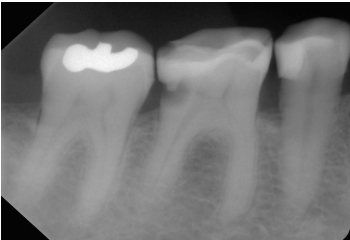
Explanation:
The percussion test involves tapping the tooth to assess for tenderness or discomfort, which can indicate inflammation or infection in the surrounding tissues or the tooth itself. In Alexander's case, since the tooth is occasionally sensitive to hot and cold, performing a percussion test can help determine if there is any underlying issue such as periapical inflammation or pulpitis.
Explanation:
Bonding to dentin, especially near the gingival margin, can be challenging and unpredictable due to factors like moisture control and the presence of dentinal tubules, which may affect the integrity of the restoration over time. Therefore, it is the most likely cause of failure for class II composite restorations in posterior teeth.
Explanation:
"Dull and lingering for 1-2 minutes," is the most appropriate description of the sensitivity to hot and cold expected from Alexander. This description aligns with symptoms commonly associated with reversible pulpitis, indicating that the pulp is irritated but still viable.
Explanation:
Since the INR is within the acceptable range for dental extractions, proceeding with the extraction and providing appropriate post-operative instructions would be the most appropriate action.
Explanation:
Waiting for the patient to assess their functional and aesthetic concerns before deciding on a replacement option is appropriate. It allows the patient time to consider their preferences and needs before proceeding with any prosthodontic treatment.
Explanation:
Trauma to the tooth can lead to pulp exposure or injury. Assessing for pulpal involvement is crucial to determine if root canal treatment is needed to preserve the tooth.
Explanation:
The visible cavity indicates dental caries. The most appropriate initial treatment is to restore the tooth with a filling to prevent further decay and alleviate sensitivity.
Advertisement
Explanation:
Redness and swelling around the gum line are characteristic signs of gingivitis, which is inflammation of the gums. It is often caused by poor oral hygiene.
Explanation:
The presence of a draining sinus tract near the mandibular molars indicates an infection originating from the tooth's apex, known as a periapical abscess.
Explanation:
Clicking sounds and discomfort while opening the mouth are common symptoms of temporomandibular joint (TMJ) disorders, which affect the jaw joint and surrounding muscles.
Explanation:
Malalignment of teeth, also known as malocclusion, is best managed by an orthodontist who can assess the patient's bite and provide appropriate treatment such as braces.